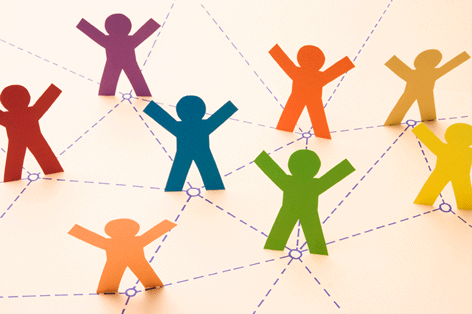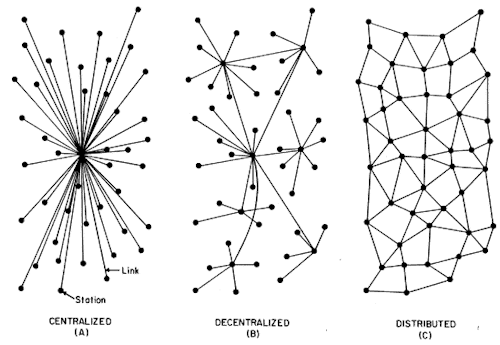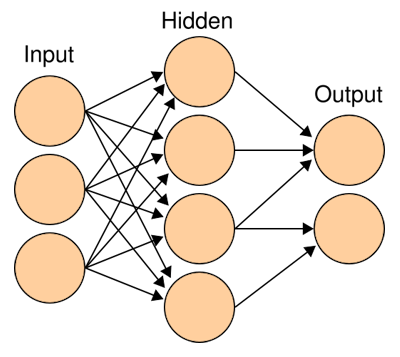Networks …

The People are the Network
I am as guilty of it as the rest of you: beavering away in isolation assuming that uninterrupted attention and personal research would be sufficient to get a handle on something new when … there are people who know stuff that you could ask, expertise that you can draw on. Yeah, I know, a “duh!” moment, but hey, it took me a while to re-realise this, my brain is in holiday mode and I am sporting about a week and a half’s beardy wierdy growth [should do something about the “bad santa” look actually].
The Internet is an amazing thing [will these revelations and original incites never cease I hear you face-palm], it provides a conduit through which people can reach out and share – not a Google “CDROM in the sky” sort of sharing [which is just really glorified “taking”] but providing a sounding board to bounce ideas off, offering fresh perspectives and re-directing questions to other contacts. It took a late night conversation [for me] with Lindy [early morning of previous day for her – she is on the other side of the planet physically and there is this pesky thing called linear time and an even more perplexing international date line thing that always messes with my head] to help me realise this again. Wow that was a convoluted sentence – English is teh sex!
The “virtual world community” is vast, and it makes sense to talk to other people about what they are doing, how they are doing it, why they are bothering to do it at all [shits and giggles are all very well – sheesh, I have built my life out of them; but work/play time needs to be value-added sometimes, right?], what others thought about it, how others used it and how effectively it did it’s job. More interestingly, was it done well enough for “emergent” behaviours to occur – you know, people/things using the stuff in ways that are perfectly valid, interesting, valuable but … unexpected or not specifically planned for – the mark of true success for me.

Modes of Connection
How you connect is a product of a few things – the situation you find yourself in, your social ability [those who have taken any real time to get to know me would realise I am actually a bit of an agorophobe, I get wierded out by people … so naturally I took on a career as a teacher, but I digress] and assuming that one pattern persists for any extended period of time is not necessarily correct either – a little from column A, little from column B and a little from column C at times [see how I seamlessly interwove a rambling with an included and shamelessly stolen image from Google?].
The biggest problem with relying on model A all the time is that the epicentre holds it all together. If I have learned nothing else from being employed, I have learned that NO ONE is indispensable. Model A works if the linchpin is dynamic and active, in touch with all the other stations and cognoscente of what they are doing but able to delegate responsibility to them – they hold the pieces and the linchpin holds the big picture.
Model B is more closely what usually happens – people form clusters of interest and activity and the relationships between puddles of activity need mediation to ensure all are on the same page. It is effective because the puddles form out of common purpose, vision or association. It fails when the puddles lose touch with each other or lack a basic understanding of what the others are doing – this can lead to duplication of effort and misundertsanding, power play and other politics [did I mention I am so not interested in politics, just putting that out there].
Model C “should” work, but is rarely if ever used in human society and I wonder why. Yeah, sure, organisationally it is fraught with issues around who is doing what, when, with what, why and when they will be done, but a distributed model is emerging from the murky ether of computer networks as the “smarter” way to get something big and complicated done effectively.
I attended a Secondlife presentation this morning on using GIS data [off topic? I no longer know, sorry], satellite imagery and other geo-spatial data sets are being harnessed to dynamically and [at least in the final phase] automatically generate faithful scale models of the real world in a virtual one – the demos were truly impressive as the data sets modellers can draw on for many parts of the planet are so rich and varied but wow, what an idea. I could see augmented reality products, architectural sims for planning permission, traffic flow sims etc that _could_ be where this was heading but the commercial applications were front and centre, sadly. What amused me the most [and it was naughty of me, and so off topic again, but you get that] was that the sims produced by this automated data acquisition were 1/3 size, so the presenters avatar was 1/3 size also – he presented in-world on a highchair specially built for him [presumably so as not to look like a highchair but failing miserably] as a very short munchkin [by established munchkin standards -yes I Googled that also].

The Hidden Layer
Before I go on, I stole another image [thank you Google] that illustrates an artificial neural network – well one flavour of them called a back-error-propagation neural net. It exemplifies a connection pattern that I suspect is closer to what actually happens in many projects – there is INPUT, often at a high/conceptual level, a bunch of geeks then beaver away HIDDEN [well, in truth, in the background, but this is a metaphor so you can cut me some slack] and make something that is the OUTPUT that is either celebrated or derided. It is a long way from the DESIGN-DEVELOP-EVALUATE process that has built-in feedback backwards and forwards throughout the process, but I digress. Thought I would include it anyways because it was neat.
I skyped [is that a new iVerb? like “googled”, “blogged” …] with Bron about virtual world projects, in particular Activeworld projects and got some great advice, pointers to people, ideas for cross-pollination of projects and some insight into in-school resistance that any project will have to face. She reminded me [thanks again Bron] that the power of people and purpose is never stronger than when developing something new [particularly when there are people who have been there, done that, with that for a long while], and that the NEW should be considered a COMPANION for what is already there – building BRIDGES is much more constructivist [and conducive to skills transference, adoption, peace, harmony and the American way] than erecting FENCES. We also agreed that even the flashiest, twirliest new thing is a hopeless waste of time if there is not sound PEDAGOGY, and it is not embedded in quality CURRICULA and implemented by enthusiastic and capable MENTORS.
Much to follow up on, personal learning networks can be transformational, if you let them be. I also scored a guest account in Quest Atlantis [an ActiveWorld I first entered as part of the pilot years back, with Bron] and am interested in world feel, use of objects, layout and interface affordances. Some more play ahead I hope.